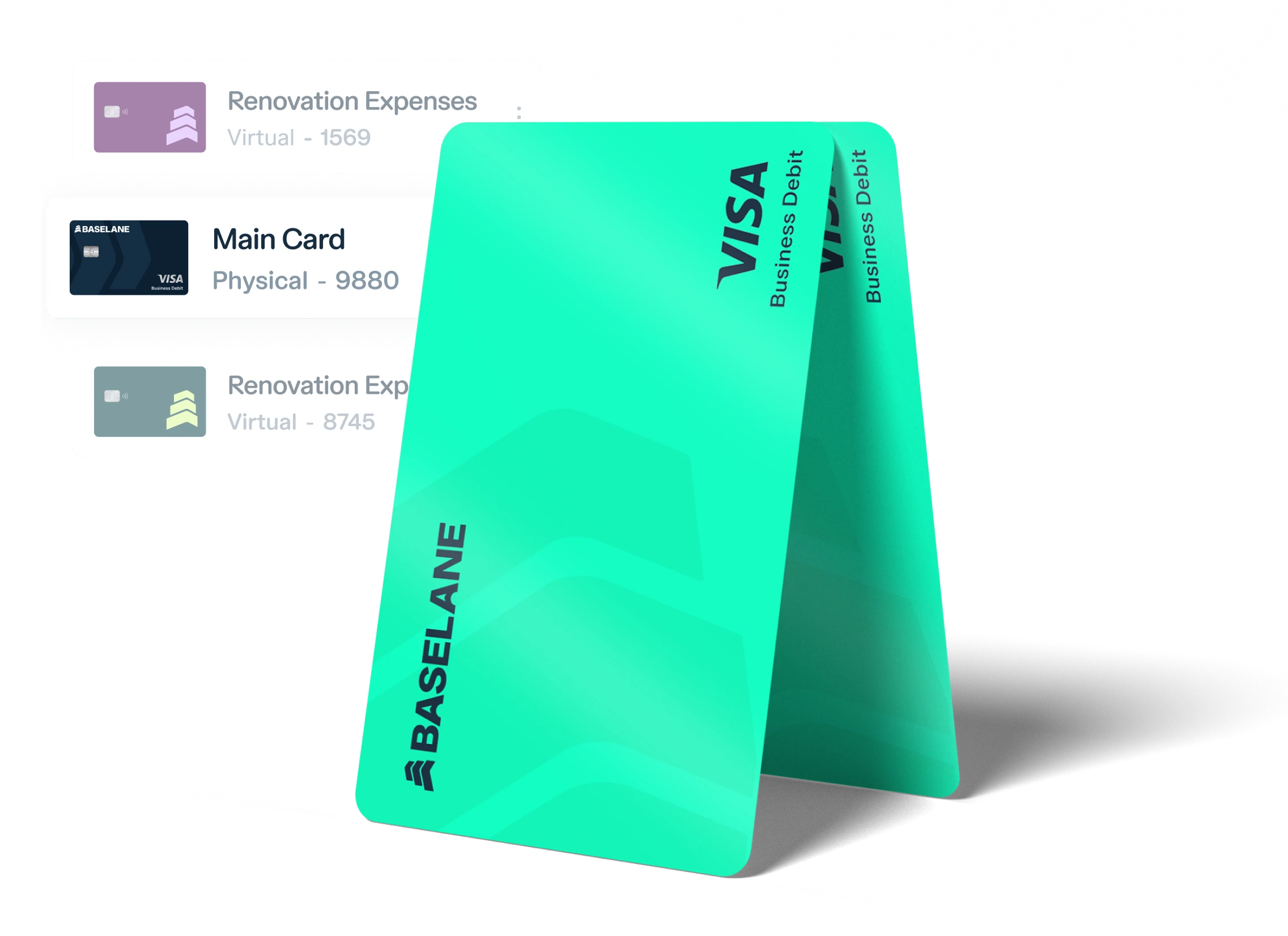Managing your rental property finances effectively is crucial for profitability and compliance. Two key tools for handling your money are high-yield savings and checking accounts.
Understanding the strengths of each helps you optimize how you manage rental income, expenses, and reserves. So, which account type is right for your specific needs as a landlord? Let’s find out.
Key takeaways
- Separate checking and savings accounts are vital for clear rental property finances.
- Checking accounts are best for daily transactions like collecting rent and paying expenses.
- High-yield savings accounts are ideal for growing reserves like emergency funds or capital expenditure savings due to higher APYs.
- Legal requirements for security deposits often mandate holding funds in separate, potentially interest-bearing accounts.
- Combining both account types strategically offers the best approach for landlords to manage cash flow while earning interest on reserves.
- Banking platforms tailored for landlords provide integrated features like multiple accounts, higher FDIC limits, and cash back rewards relevant to property expenses.
The landlord's financial landscape: Income, expenses, and reserves
As a landlord, your financial life involves distinct flows of money. You regularly receive rent income from tenants, which is the primary driver of your business.
Simultaneously, you have ongoing expenses like property taxes, insurance, utilities, maintenance, and mortgage payments.
Beyond day-to-day cash flow, successful landlords plan for future costs. This includes setting aside funds for unexpected repairs, vacancies, or significant capital improvements like roof replacements. Managing these different financial buckets requires strategic banking solutions.
Checking accounts: Your hub for daily transactions
A checking account is designed for frequent transactions. It provides easy access to your funds through debit cards, checks, and electronic transfers. For landlords, this accessibility is non-negotiable for managing operational cash flow.
What is a checking account?
A checking account is a demand deposit account held at a financial institution. It allows funds to be easily withdrawn or transferred using various methods. These accounts are optimized for transactions rather than earning high returns.
Why do landlords need a checking account?
Landlords rely on checking accounts for critical daily operations. Rent payments typically flow directly into a checking account rental income tracker.
All your operational expenses, such as mortgage payments, property taxes, insurance premiums, and repair costs, are paid from this account best no fee checking accounts. Using a checking account keeps your transactional funds separate and accessible.
High-yield checking pros and cons
Pros:
- Some checking accounts offer higher-than-average interest rates, known as high-yield checking.
- Average APYs for these accounts in 2024-2025 are around 2.00% to 4.00%.
- The primary advantage is earning some interest on funds that need to remain liquid for expenses.
Cons:
- Their APYs are typically lower than those of high-yield savings accounts.
- They often come with specific requirements, such as minimum direct deposits or transaction counts, to earn the stated rate.
- High-yield checking accounts might have balance caps for the high rate or impose fees if requirements aren’t met.
High-APY savings accounts: Growing your reserves
A high-yield savings account is designed to hold funds you don’t need immediate access to. The key benefit is earning a significantly higher interest rate compared to traditional savings accounts.
For landlords, these accounts are perfect for building financial cushions.
What is a high-yield savings account?
A high-yield savings account is an interest-bearing deposit account that typically offers a much higher Annual Percentage Yield (APY) than standard savings options. These accounts are ideal for storing money over time to maximize earnings. They often have withdrawal limits per month.
Why do landlords need a savings account?
Landlords need savings accounts to build and store crucial reserves. These reserves include emergency funds for unexpected repairs, capital expenditures for major property upgrades, or vacancy reserves to cover costs when a unit is empty cash reserve account.
High-yield savings accounts allow these reserve funds to grow over time. Average APYs for high-yield savings accounts in 2024-2025 are approximately 4.00% to 5.00%.
High-yield savings accounts are best suited for storing funds not needed for immediate expenses. This strategy helps ensure you have funds available for planned or unexpected future costs.
You can find the best high yield online savings account options tailored for rental property owners. Learn How to setup high yield savings accounts quickly.
High-APY savings pros and cons
The primary advantage of high-APY savings accounts is maximizing interest earned on idle funds. This growth contributes directly to your investment returns over time. Funds in these accounts are also typically FDIC-insured up to standard limits.
Potential drawbacks include federal limits on monthly withdrawals (currently six) and potentially longer transfer times to access funds compared to checking accounts.
Some accounts might also have minimum balance requirements to earn the highest APY. However, for long-term reserves, the interest-earning potential usually outweighs these limitations.
Comparing high-APY savings account vs. checking account
To help you choose the right setup for your rental property finances, we’ve broken down the key differences between high-yield savings and checking accounts.
Whether you’re managing day-to-day transactions or building reserves for the future, the table below highlights how each account type serves a unique role — and why using both can give you greater clarity, control, and earning potential.
| Feature | High-APY Savings Account | Checking Account |
|---|---|---|
| Primary Use | Building reserves (emergency funds, CapEx, vacancies) | Managing daily transactions (rent collection, expenses) |
| Ideal For | Storing funds long-term to earn interest | Frequent access and payments |
| Access to Funds | Limited (up to 6 withdrawals/month, may take 1–3 days to transfer) | Immediate (ACH, debit, check, bill pay) |
| Average APY | 4.00% to 5.00% (online or purpose-built platforms like Baselane) | 0.01% to 0.25% (standard), up to ~2.00–4.00% with conditions (HY checking) |
| Fees | Typically $5-15/month (waivable), may require minimum balances | $5-25/month (often waivable), plus overdraft or transaction fees |
| Minimum Balance | Often $100–500 to earn APY | Usually $0–500 to avoid fees |
| Security Deposit Compliance | Can meet state interest-bearing account requirements | Rarely compliant for security deposits |
| Interest Earnings | Designed to maximize idle fund growth | Minimal, unless high-yield checking (with usage rules) |
| Withdrawal Limits | Yes (usually 6 per month federally) | No limits on number of transactions |
| Account Organization | Some platforms allow multiple labeled sub-accounts | Rarely allows multiple sub-accounts |
| FDIC Insurance | Up to $250,000 per depositor (platforms like Baselane offer higher¹) | Same FDIC limits |
The importance of separate accounts for landlords
Maintaining separate bank accounts for rental property finances is strongly recommended. This practice helps simplify accounting, maximizes tax deductions, and protects personal assets.
While not always legally required for rental income itself, it is a fundamental best practice for landlords.
Why mixing personal and rental funds is risky
Co-mingling personal and business funds creates significant risks. It makes tracking rental income and expenses for tax purposes extremely difficult. This can lead to missed deductions or errors that trigger an audit.
Legally, mixing funds can blur the lines between you and your rental property business entity.
This could potentially expose your personal assets to liability if your property faces legal issues or debt. Keeping finances separate ensures clarity and organization.
Setting up business accounts for LLC vs. sole proprietorship
The process for setting up separate accounts depends on your business structure. If you operate as an LLC or corporation, opening an LLC business bank account is essential to maintain the legal separation between you and the entity.
Even if you are a sole proprietorship, opening a distinct sole proprietorship bank account simplifies tracking and protects your personal finances. Choosing the right real estate business account is a key step.
Some banking platforms designed for landlords make it easy to set up these accounts. For example, Baselane allows you to create unlimited accounts. This helps you keep funds separate, not just from personal money, but also potentially for each property or specific purpose.
Benefits of accounts per property or purpose
Creating multiple accounts can significantly enhance financial organization. You might have one checking account for all properties’ income and expenses. Alternatively, you could set up separate accounts for each property you own.
Additional accounts are beneficial for specific purposes like security deposits, maintenance funds, or capital reserves.
This level of separation provides granular insight into the performance of individual properties and the status of specific fund buckets. Landlord-focused platforms, including Baselane and Stessa, support creating unlimited separate accounts for this purpose.
Special considerations for Security deposits
Security deposits are a unique financial aspect of being a landlord. Unlike regular rental income, these funds typically belong to the tenant until the end of the lease term. Handling them correctly according to state law is critical.
How state laws vary for holding security deposits
Regulations regarding security deposit handling vary significantly by state. Some states mandate that deposits be held in a separate bank account, distinct from the landlord’s personal or operating funds. This account might need to be an interest-bearing account.
For example, New Jersey requires security deposits to be held in an interest-bearing account in a New Jersey bank, with the interest either paid to the tenant annually or credited towards rent
Other states have different rules, some allowing landlords to keep the interest or not requiring a separate account at all. It is crucial to understand the specific laws in your state.
Using interest-bearing accounts for security deposits
If your state requires security deposits to be held in an interest-bearing account, a savings account is a suitable option.
This ensures you comply with the law while potentially earning some interest on the funds (depending on state rules regarding who keeps the interest). Keeping security deposits separate is a legal and ethical obligation.
Even if not legally required, using a separate account for security deposits provides transparency and makes it easier to track and return these funds correctly. Landlord-specific banking platforms often facilitate setting up dedicated accounts for this purpose.
For example, Baselane allows creating unlimited sub-accounts, which can be designated specifically for security deposits.
Combining strategies using both accounts
The most effective financial management strategy for landlords often involves using both checking and high-yield savings accounts in tandem.
Each account type serves a distinct purpose. This approach balances accessibility for daily needs with earning potential for reserve funds.
Setting up a system for income flow and expense payment
A common system involves directing all rental income into your primary checking account. This account is used to pay all property-related expenses, such as mortgages, insurance, property taxes, and maintenance bills.
Keeping all operational cash flow here simplifies tracking and ensures funds are readily available.
Using a banking platform with integrated tools helps streamline this process. Platforms like Baselane offer automated rent collection and expense tracking linked directly to your checking account. This provides a clear view of your cash flow.
Automating transfers to savings for reserves
Once operating expenses are covered, automate transfers of surplus funds from your checking to your high-yield savings account. This automated transfer can be scheduled weekly or monthly.
It ensures you consistently build reserves for future needs without having to remember to do it manually.
These reserves, stored in the high-APY savings account, earn interest until needed. This strategy allows your emergency fund, capital expenditure savings, or vacancy reserves to grow over time. Automating this process helps maintain financial discipline and grow your wealth.
Beyond traditional banking
Traditional banks may not offer the integrated features landlords need. Platforms built specifically for real estate investors provide tailored banking solutions alongside property management tools.
Here’s a side-by-side comparison of standard high-yield offerings to landlord-first platforms like Baselane — so you can see exactly what you’re gaining when you choose purpose-built banking.
| Feature | Traditional Banks (Chase) | Landlord-Focused Platform (Baselane) |
|---|---|---|
| Annual Percentage Yield (APY) | 0.01% on savings | Up to 3.35% APY² on savings |
| Account Fees | $15-$25 | No minimum balance |
| Security Deposit Compliance | Not built for rental-specific compliance | Enables separate sub-accounts for legal security deposit handling |
| Number of Accounts Allowed | Typically 1 savings + 1 checking per business entity | Unlimited accounts per property or purpose |
| Bookkeeping Integration | None or limited | Built-in bookkeeping with auto-tagging |
| Transaction Categorization | Manual via spreadsheets or external tools | Automated by property & Schedule E category |
| Cash Flow & Reporting | Basic statements | Real-time reports: rent roll, tenant ledger, NOI, more |
| Automation Features | Limited: basic bill pay and transfers | Automated rent collection, transfers, categorization, and alerts |
| FDIC Insurance Coverage | Up to $250,000 per depositor | Up to $3M¹ for funds deposited through Thread Bank; Member FDIC |
Choosing the right accounts for your portfolio
Selecting the best banking setup involves evaluating your specific needs and priorities. Consider how frequently you need to access funds and the amount you plan to keep in reserves. Your business structure (LLC, sole proprietorship) also influences account requirements.
Factors to consider:
- Look at the Annual Percentage Yield to understand earning potential, especially for savings.
- Check for any monthly fees, transaction limits, or minimum balance requirements that could impact your costs.
- Evaluate how easily you can access funds through transfers, cards, or online bill pay.
- Consider the features offered, such as the ability to create multiple accounts, integrate with accounting software, or automate rent collection.
- Verify the FDIC insurance limit to ensure your deposits are protected.
- FDIC insurance is available on deposits.
Optimize your rental property finances with Baselane
Effectively managing your rental property finances is key to success. Utilizing both checking and high-APY savings accounts strategically provides the structure needed for organization, compliance, and growth.
Checking accounts handle daily transactions, while high-yield savings grow your essential reserves. Separating business and personal funds is a non-negotiable practice for tax accuracy and asset protection.
Baselane offers integrated banking, rent collection, and bookkeeping, simplifying this process. By setting up the right accounts and automating your financial workflows, you can reclaim time, gain clarity and control, and focus on growing your real estate business. Sign up for free today!
FAQs
Checking accounts are for frequent transactions like rent deposits and expense payments. High-APY savings accounts are for holding reserves and emergency funds to earn higher interest.
Separating accounts simplifies bookkeeping, improves tax accuracy, and protects personal assets from business liabilities. It provides a clear audit trail for all rental income and expenses.
Landlords usually deposit rent into a checking account for paying bills. Surplus funds are then transferred to a high-APY savings account to build reserves and earn interest.
Legal requirements for security deposits vary by state. Some states mandate they be held in separate, interest-bearing accounts, sometimes with interest paid to the tenant.








